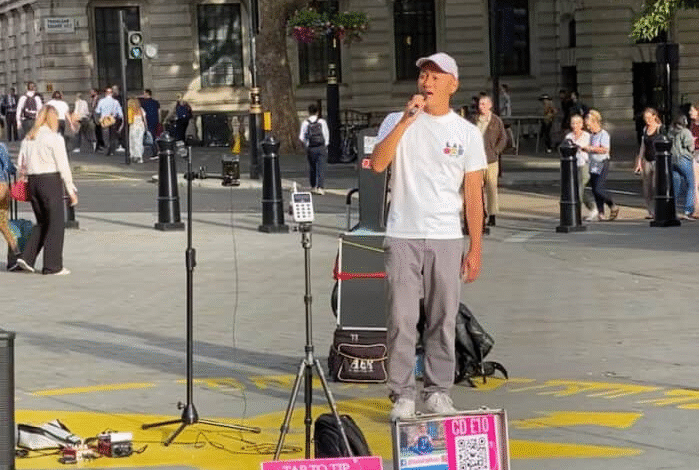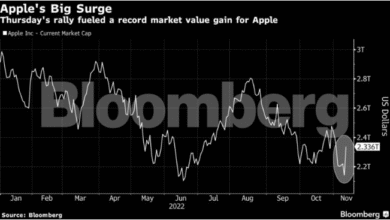Digital Tipping for Street Performers: A New Era

Digital tipping for street performers is revolutionizing the way buskers earn their living in an increasingly cashless society. As more consumers rely on apps like Venmo and Cash App for transactions, street performers are adapting by showcasing QR codes, allowing fans to send cashless tips directly from their smartphones. This shift presents both opportunities and challenges, influencing the financial impact on street artists as traditional cash tips decline. With nearly 87% of all U.S. transactions being cashless in 2024, performers like Natalia Paruz, known as the Saw Lady, are finding creative ways to connect with their audience and ensure they receive compensation for their artistry. As digital payments become the norm, the bustling streets become a digital marketplace, where the art of performance melds with technological innovation.
In today’s fast-paced environment, the concept of online tipping is becoming the new standard for artists showcasing their talents on the streets. This cashless trend, encompassing digital payments like PayPal and specialized platforms for performers, is reshaping how fans support artists during live performances. The transition from physical cash to mobile transactions is not without its hurdles, yet it offers street artists a chance to engage with their audience in novel ways. With the rise of payment solutions designed for gig workers, performers aim to sustain their livelihoods amidst changing consumer habits, as many now prefer the convenience of portable payments over traditional cash tips. Thus, the landscape for street entertainers is evolving, blending entertainment with technology in a modern twist on an age-old profession.
The Shift to Digital Tipping for Street Performers
As cash usage declines across the United States, street performers are increasingly adapting to a new era of tipping through digital means. Artists like Natalia Paruz, also known as the Saw Lady, have turned to platforms like Venmo and PayPal to capture the attention of an audience that often comes empty-handed. With a growing number of commuters stating they prefer to avoid cash transactions, QR codes are becoming a common sight near tip buckets, signaling a shift in the way performances are monetized. This transition not only reflects consumer preferences but also emphasizes the necessity for buskers to embrace technology to remain financially viable.
Interestingly, the evolution towards cashless tips raises questions about the overall financial impact on street artists. While some artists report a noticeable increase in digital tips, others find that traditional cash tips often exceed their digital counterparts. For example, Gabriel Aldort, a New York blues keyboardist, cites that only 5% of his tips come from digital sources. This disparity raises concerns about whether buskers are truly gaining from the cashless trend or if they simply face new hurdles in a rapidly changing financial landscape.
Understanding the Benefits of Cashless Payments like Venmo and Cash App
Digital payment platforms such as Venmo and Cash App have revolutionized how street performers receive tips. These applications provide a convenient way for audiences to contribute financially without needing to carry cash, enhancing the overall experience for both artists and spectators. The ease of sending money digitally allows patrons to tip quickly and efficiently, promoting a more spontaneous gifting culture. Many performers have reported an uptick in the number of tips received, shifting the dynamics of traditional contributions. This adaptability is crucial for survival in a sector increasingly characterized by transient audiences and changing consumer behaviors.
However, the introduction of digital tipping does come with its challenges. Street artists often notice that cash tips tend to be more generous than their digital equivalents. As performer Chadd “Wacky Chad” Deitz highlights, the psychological aspect of physical cash gives audiences a greater sense of engagement with the performance. When viewers can see others tipping in cash, it encourages them to join in as well. This sense of community is somewhat lost in digital transactions, where interaction is limited, and the act of giving feels less personal.
The Financial Landscape for Street Performers Adapting to Cashless Tips
The financial landscape for street performers is rapidly evolving as digital tipping becomes more mainstream. While some performers enthusiastically embrace services like busk.co, which are specifically designed for artists, many still rely on conventional payment methods. Natalia Paruz outlines that 70% of her tips originate from cash, indicating that despite technological advancements, traditional methods remain popular among audiences. The struggle between adapting to new payment methods while maintaining financial stability illustrates the complex nature of street performance as both an art form and a business.
Moreover, reports show that the percentage of cash used for spontaneous payments under $25 is still considerable, especially among older demographics. This paints a picture of a generational shift wherein younger patrons gravitate towards digital, whereas older individuals prefer the familiarity of cash. Thus, the tactile nature of cash not only fosters connection but may also yield higher earnings for street artists. For performers like Danny Tangelo, this generational gap highlights the importance of maintaining diverse payment strategies to optimize their income.
Challenges of Digital Payments for Street Performers
Despite the potential benefits of digital tipping, street performers face several challenges. Financial experts suggest that the convenience of cashless payments can diminish audience engagement and reduce the motivation to tip generously. Performers such as Deitz have observed that when an audience is aware of a digital payment option, they are likely to feel less obligated to contribute, seeing fewer others doing the same. This phenomenon directly impacts the revenue stream of those who perform, often leaving them in a tricky position where they must navigate both cash and digital tips.
Additionally, the fees associated with services like Venmo and Cash App can add up significantly, eating into earnings for artists who primarily receive tips digitally. With every transaction incurring a fee, these costs quickly mount up for heavy users. As performers try to counteract declining cash tips, understanding the costs tied to cashless platforms becomes crucial for sustaining a livable income. Many street artists are left balancing the advantages of increased reach against the real financial implications of utilizing these modern payment solutions.
How Digital Tipping is Reshaping the Busking Community
Digital tipping is progressively reshaping the busking community, altering not only how performers receive income but also how audiences interact with them. The emergence of cashless payment platforms fosters an environment where even those who may not traditionally carry cash feel empowered to financially support street artists. This inclusion broadens the potential audience for tips and thus enhances the earning capabilities of buskers substantially. It marks a democratization of support where anyone with a smartphone can contribute, potentially increasing the overall appreciation for live performances.
However, as street performers adapt to this change, the challenge remains in keeping the spirit of busking alive amid the digital transition. The inherent connection between performers and their audiences—built through personal interaction—is at risk. As Paruz mentions, digital payments create a disconnect, where the audience feels less inclined to engage directly with artists. Thus, while digital tipping opens new avenues for support, performers must find innovative ways to blend the digital and physical realms of busking to maintain their artistry and connection with the public.
The Role of Technology in Supporting Street Performance
Technology plays a pivotal role in supporting street performance, particularly as digital tipping becomes more commonplace. Applications such as busk.co are designed specifically for performers, allowing them to accept a variety of payment methods seamlessly. This innovative solution provides artists with tools that help them bypass traditional cash challenges while also allowing them to focus on their craft. Furthermore, the continued advancement of payment technology offers new opportunities for street artists to receive royalties and compensation for their creative works in different formats.
Nevertheless, as performers embrace technology, they also face hurdles in terms of public perception and acceptance of digital payments. While younger generations might readily adopt cashless options, older audiences may still prefer physical cash, presenting a challenge for artists who need to cater to varied preferences. The key for street performers will be to harness technology while nurturing the personal engagement that is so essential to the art of busking, striving for a balance that honors the past while innovating for the future.
Navigating the Emotional and Financial Impacts of Cashless Tips
The shift towards cashless tipping not only impacts street performers financially, but it has significant emotional ramifications as well. The act of tipping cash fosters a sense of connection and appreciation between the artist and the audience. For performers like Natalia Paruz, digital payment methods can feel impersonal, which detracts from the overall experience of engaging with their fans. When audiences tip in cash, there is often a moment of interaction—an exchange that many artists cherish as part of their performance.
On the other hand, performers must also contend with the pressures of relying on digital tips. Artists like Chadd Deitz have noted that a considerable portion of their audience may opt out of tipping when faced with a digital option out of convenience. This underlines the emotional toll of relying on technology to facilitate what has traditionally been an enthusiastic and engaging experience. Ultimately, balancing the financial benefits of cashless tips with the emotional connections created through cash transactions will be a compelling challenge for street performers moving forward.
The Future of Street Performance in a Cashless Society
As we move towards an increasingly cashless society, the future of street performance rests heavily on the shoulders of technological adaptability. Performers will need to continuously evaluate the efficacy of their payment methods and how they align with audience behaviors. While platforms like Venmo and Cash App provide essential support, the challenge lies in ensuring that these tools do not alienate audiences who may still favor cash interactions. Street artists who can best navigate this balance will likely thrive in this evolving economic landscape.
Moreover, the rise of digital tipping signifies a broader cultural shift in how we value the arts and live performances. As more audiences become accustomed to cashless transactions, street performers may see a new wave of appreciation for their work, regardless of the payment method. This transition may ultimately lead to a renewed focus on supporting the arts and enriching community spaces through live performance. The path forward will rely on the community’s ability to adapt while keeping the essence of what it means to be a performer alive.
Frequently Asked Questions
How can digital tipping for street performers improve their earnings?
Digital tipping for street performers allows artists to receive cashless tips through popular payment platforms like Venmo and Cash App, making it easier for audiences, especially tourists and younger patrons, to contribute. With an increasing number of people carrying less cash, these digital payments can supplement traditional cash tips and potentially boost overall earnings.
What payment apps are popular among street performers for receiving digital tips?
Street performers commonly use payment apps like Venmo, Cash App, and also specialized platforms like busk.co, which allows performers to receive tips via Apple Pay and Google Pay. These digital tipping options provide convenience and a broader reach to audiences who prefer cashless transactions.
Are street performers seeing a decline in cash tips due to digital tipping?
Yes, many street performers report a decline in cash tips as digital tipping becomes more common. While some still prefer cash for its higher psychological impact, others note that cashless transactions can help maintain a steady flow of donations in an increasingly cashless society.
How does the usage of cash versus digital tipping vary among different age groups for street performers?
Younger audiences, particularly those aged 18 to 24, tend to favor digital tipping for street performers, while older generations, especially those 55 and up, are more likely to use cash. This generational gap highlights the importance of offering both digital and cash options to cater to a diverse audience.
What challenges do street performers face when relying on digital tipping?
Street performers often face challenges with digital tipping, including lower average tip amounts compared to cash gifts, transaction fees imposed by payment apps, and a lack of engagement with the audience that physical cash tipping used to foster. Additionally, the anonymity of digital payments can decrease the perceived obligation to tip.
Can digital tipping for street performers increase visibility and awareness during performances?
While digital tipping may simplify the tipping process for audiences, it can result in lower visibility during performances, as fewer people physically approach performers to give tips. This can diminish the communal aspect of busking, as fewer interactions occur when tips are sent digitally.
What should street performers consider when choosing digital tipping options?
Street performers should consider the popular payment apps their audience is likely to use, the transaction fees associated with each app, and the need for visible displays like QR codes to encourage digital tipping. Additionally, they should evaluate if specialized services like busk.co might provide better terms for their specific needs as artists.
Is there any impact of increasing digital tipping on the traditional street performance culture?
The shift towards digital tipping for street performers may impact traditional street performance culture by reducing personal interactions and the communal atmosphere that cash tips often create. Performers may need to adapt their styles and engagement techniques to maintain audience involvement in a more digital landscape.
How can street performers encourage audiences to tip digitally?
Street performers can engage their audience by clearly displaying QR codes for digital payment apps, using creative signs to promote cashless tipping, and explaining the convenience of digital payments. A friendly approach that fosters interaction may also encourage more people to participate in digital tipping.
What future trends can we expect for street performers regarding digital tipping?
As cash continues to decline in favor of digital payment methods, street performers are likely to see an increasing reliance on digital tipping. This trend could lead to the development of more specialized payment platforms for buskers, greater acceptance of cashless tips, and the need for performers to innovate their engagement strategies to adapt to this digital landscape.
| Key Points |
|---|
| Natalia Paruz, also known as the ‘Saw Lady’, has seen a decline in cash tips at her street performances due to many audiences not carrying cash. |
| Street performers are increasingly adopting digital payments like Venmo and PayPal to adapt to the cashless trend, with nearly 87% of transactions in the U.S. being cashless in 2024. |
| Despite the rise in digital tipping, many performers still receive the majority of their tips in cash, reflecting both generational and economic differences in payment preferences. |
| Some performers like Chadd ‘Wacky Chad’ Deitz have reported that digital payments now account for 30-40% of their income, but many still believe cash tips are higher on average. |
| Digital tipping has made interactions less personal, as audiences tend not to approach performers, impacting the overall tipping culture negatively according to several performers. |
| There’s an emerging option with busk.co, a nonprofit platform designed specifically for buskers to receive tips through digital methods without high fees. |
| Overall, performers face ongoing challenges with tipping culture, as many Americans feel that tipping practices are excessive, which can lead to lower tips for street performers. |
Summary
Digital tipping for street performers is becoming an essential part of how they earn their income as cash transactions decline. Performers like Natalia Paruz are turning to digital platforms to adapt to changing payment habits among audiences. While there are benefits to digital tipping such as reach and convenience, many artists report that cash tips remain significant and often higher, suggesting that digital payments are only part of the solution. Ultimately, while digital tipping can provide opportunities for street performers, it also presents challenges that redefine the interaction between performers and their audience.



